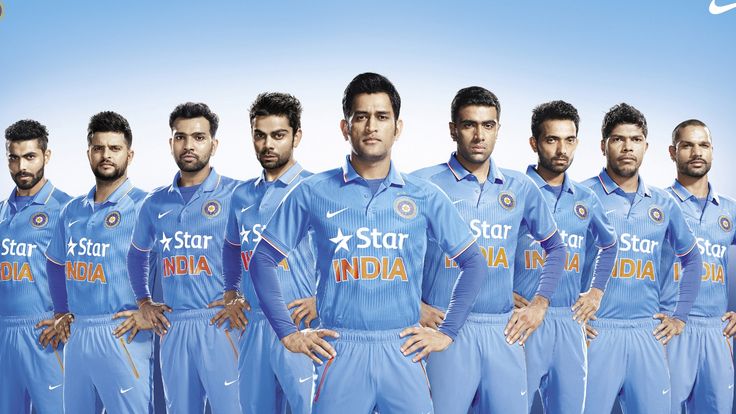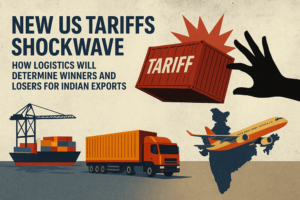Cricket is not just a sport—it’s a religion in India. With deep-rooted traditions, the game has undergone a significant transformation over the decades. Beyond the on-field action, the logistics supporting cricket events have evolved remarkably, adapting to technological advancements and the sport’s global expansion.
How did we get here? What were the logistical challenges of the past? How are they handled today? And what does the future hold for cricket logistics?
We examine all these questions here.
The Past: Simpler Times, Greater Challenges
In its early days, cricket logistics were relatively straightforward, mainly involving the transportation of players and essential equipment to match venues. Teams traveled by train or bus, and equipment was limited to bats, balls, and protective gear. International tours were rare, and when they did happen, teams endured long sea voyages, making logistics a significant challenge.
The Present: The Age of Global Cricket Logistics
With the rise of T20 leagues like the IPL, The Hundred, and the Big Bash League, cricket is now a fast-paced, year-round industry requiring efficient, high-speed logistics.
1. Team and Equipment Movement
Modern teams travel extensively, often covering multiple countries in a single tour. For instance, during the IPL, teams traverse across India, necessitating meticulous planning for flights, accommodations, and ground transport.
- Private Jet Travel & Military Precision: Players are flown in private jets, and their equipment—including advanced training gear and medical supplies—is transported with military-level accuracy.
- Stadium Preparation: Preparing venues involves much more than pitch maintenance. Logistics teams transport broadcasting equipment, security systems, and even specialized turf to ensure world-class playing conditions.
- Merchandise & Fan Engagement: Cricket’s global appeal has led to a surge in merchandise sales, requiring streamlined supply chains for timely distribution worldwide.
📊 Market Insight: The global cricket equipment market, valued at USD 701.82 million in 2025, is projected to reach USD 1,098.99 million by 2032, growing at a CAGR of 6.62%. The global event logistics market is expected to grow at over 4.5% CAGR, driven by the increasing number of sporting events worldwide.
2. Broadcasting & Technology
Modern cricket heavily relies on live broadcasting, with logistics playing a pivotal role in delivering seamless coverage to millions of fans worldwide.
- Over 40 HD cameras, including drones and spider cams, capture every angle of the action.
- More than 100 tons of broadcasting equipment is transported between venues.
- 5G technology enables real-time analytics, ultra-fast ball tracking, and AI-driven insights for commentators.
3. Fan Engagement & Merchandise
Merchandise and ticketing logistics have become equally critical, with the demand for instant access to official jerseys, caps, and souvenirs skyrocketing.
- Global Distribution Networks: Merchandise is shipped worldwide with real-time tracking.
- Quick Commerce: E-commerce platforms ensure fans receive their gear within hours.
- Seamless Ticketing Operations: Logistics firms manage massive ticketing operations across digital and physical platforms.
📊 Market Insight: The global licensed sports merchandise market was valued at approximately USD 34.87 billion in 2023, with cricket merchandise contributing significantly.
The Future: Smart Logistics in Cricket
As cricket continues evolving, logistics must innovate to keep up. Here’s what the future holds:
1. AI-Driven Logistics
Artificial Intelligence (AI) will revolutionize logistics by optimizing scheduling, team travel, and resource allocation. AI can predict:
- Which cities will have the highest ticket demand.
- Which equipment needs replacement before a match.
- The best travel routes to minimize delays.
2. Sustainable Cricket Logistics
With sustainability becoming a priority, cricket will adopt eco-friendly logistics solutions:
- Electric Buses & Flights: Reducing carbon footprints during team travel.
- Eco-Friendly Stadiums: Using renewable energy for power.
- Paperless Ticketing: Cutting down on waste and improving efficiency.
3. Smart Stadiums & 5G Connectivity
Future stadiums will feature cutting-edge technology:
- Self-Check-In Ticketing Kiosks: Reducing wait times.
- AI-Powered Crowd Control: Enhancing security and efficiency.
- Smart Sensors: Adjusting lighting and temperature in real-time.
Conclusion
As cricket continues its rapid global expansion, logistics remains the unsung hero behind the game’s seamless execution. From transporting teams and broadcasting equipment to managing fan merchandise and ticketing, logistics has evolved into a high-speed, tech-driven industry.
Looking ahead, the future of cricket logistics will be defined by AI-powered supply chains, sustainable transportation, and real-time data analytics. Automation, 5G connectivity, and predictive analytics will further optimize operations, ensuring the sport meets rising global demand.
For logistics leaders, the challenge is clear: adapting to smarter, greener, and more resilient supply chains. Cricket is more than just a sport—it’s a global phenomenon, and logistics will continue to be the driving force keeping the game moving forward.












